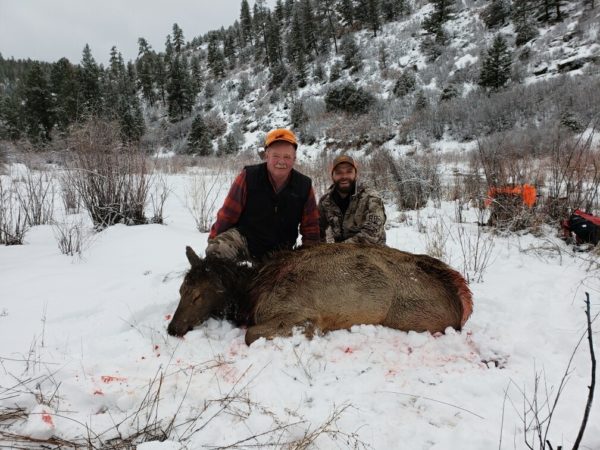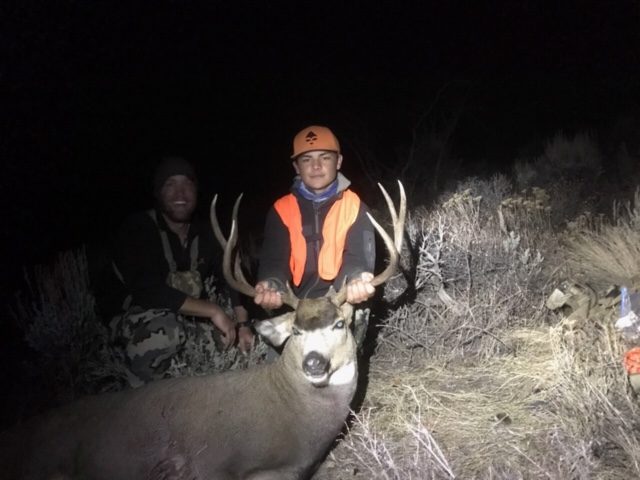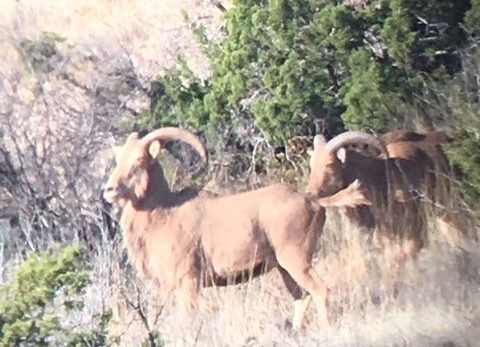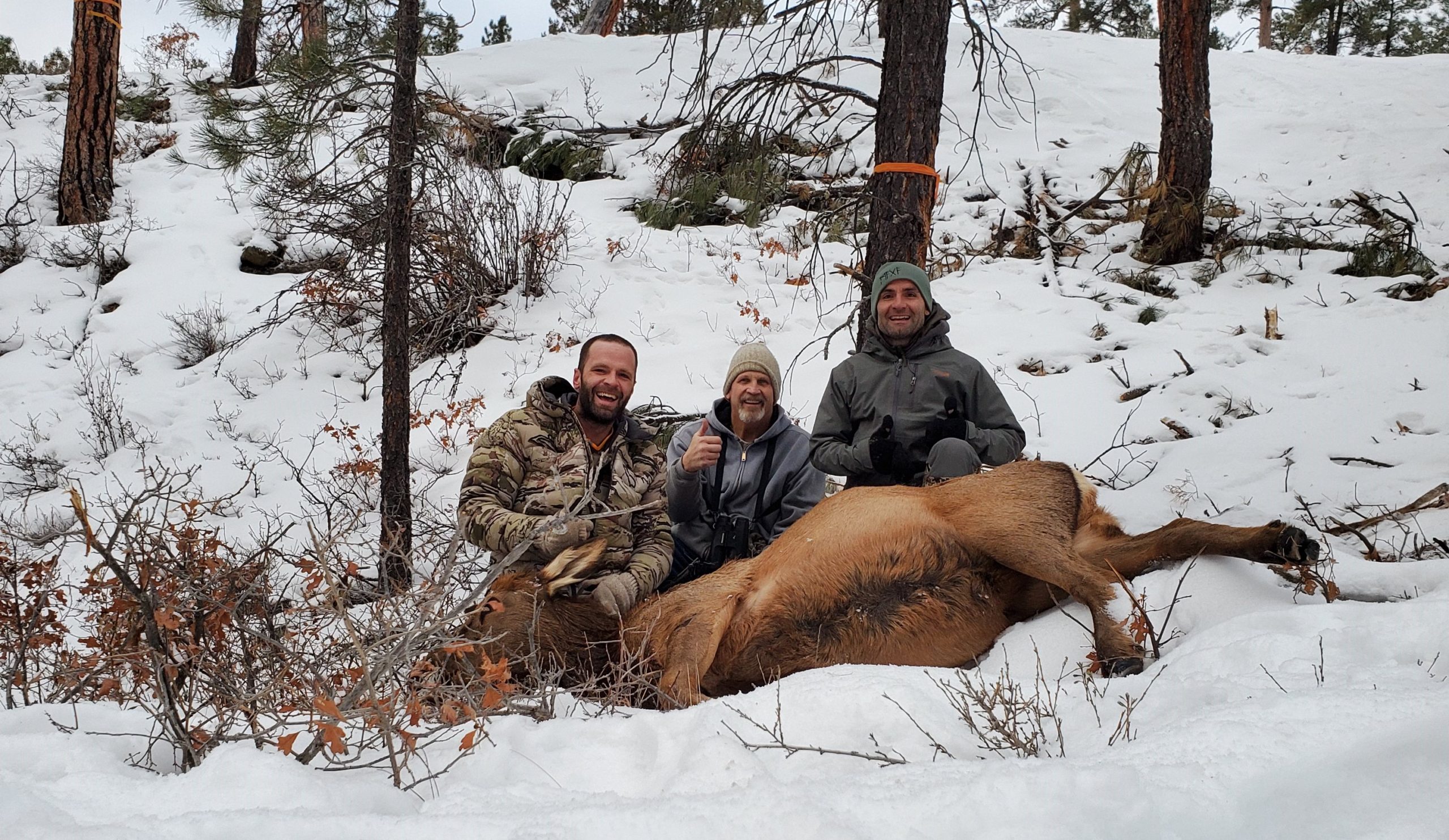This is Part II of our Get Started Hunting Series of articles. Part I covered the hunters’ safety requirements, basic gear, ethics, and base skills needed. Here, we are jumping in on the process of planning and executing your first hunts. We also provide several suggested hunts for newer hunters.
Criteria for Picking New Hunter Hunts
For your first hunts you need high success rates, species that provide decent table fare, trips that are reasonably priced and hunts that allow you to work on your skill set.
A high success rate is important. This helps newcomers avoid frustration and get reps in through tracking, stalking and shooting opportunities. High success rate hunts also get the hunter comfortable with several aspects of hunting (game processing, packing game out of the field, etc…) that are only part of successful trips. No free-range hunt is 100%, but hunters need to see some success in the first 2-4 hunts in order to gain trajectory.
Even with my emphasis on high success, I still recommend that you focus on free-range spot-and-stalk hunts in your first years of hunting. I don’t have an ethical issue with the high-fence hunting industry, but I don’t think those hunts are advantageous to learning how to become a better hunter. The animals in high fences typically don’t act like wild game. Also, the majority of the hunts are conducted in a style (sitting a stand/feeder waiting for game to show up) that is not advantageous to building up a hunter’s competence. There are a handful of large fenced ranches in the US with native born wildlife and many large South African operations that are the exception.
Part of the reason many people are focused on becoming hunters is the acquisition of their own protein. Hence, it’s self explanatory why I emphasize quality table fare species for your first hunts (deer, elk, antelope). Some game animals are an acquired taste. Avoid those for now. My hunt recommendations in the last section of this article discuss this topic further.
Hunting is expensive. This is particularly challenging early on. You aren’t yet competent enough to get the most out of all the do-it-yourself (DIY) options on public land, yet you need to achieve some success to gain that competency. High success rate hunts are, naturally, more expensive. Hence, focus on the less “sexy” species and less desirable hunts within species (female harvests, non-trophy quality).
Budget for a basket of hunts. One hunt over the next year is not enough to keep you interested and learning. Budget a basket of 4-5 hunts over the next 12-18 months. You are going to learn more and have more fun doing five free-range wild pig hunts at $900 a piece vs one bull elk hunt at $7,000. In future years the inverse may be true, but for now give the edge to volume.
Do-it-Yourself(DIY) Vs. Guided
If you want to maximize your growth as a hunter, you will take on DIY hunts and go on guided hunts. Many guided hunts give you access to better managed game populations, extend the season you can hunt, and give you access to knowledgeable guides. DIY hunts involve more woodsmanship with physical and mental hardship. These DIY hunts also involve highly pressured animals with keen senses.
On one far end of the spectrum, a hunter that goes on only guided hunts from a swanky lodge can become a “soft hunter”. These hunters don’t get to practice their wilderness skills and are generally not self-reliant in the field. Also, through habituation to comfort, they become much more likely to give-up when a hunt becomes frustrating due to limited game activity, poor weather or rough hunting conditions. Game is typically less pressured, so hunters’ attention to detail during stalks can become dull.
On the other end of the spectrum, a new hunter that only goes on DIY hunts in rugged and heavily hunted wilderness area can become more of a “mountain man” than a hunter. Low game density and few harvest opportunities can lead to less knowledge about game animal behavior and less repetitions to perfect real-life marksmanship and tracking skills. The solo nature of these hunts slows down the acquisition of knowledge from others, unless you are executing the hunts with a experienced counterpart.
A mix of both types of hunts, and all the variations in between, results in a more well-rounded and skilled hunter.
“On DIY vs. Guided, I did a lot of both, but go on guided with a purpose. You are there to learn how to DIY. Ask questions, a lot of them, especially if you think it is dumb. Don’t assume someone is doing something for a reason, ask! Also, realize there are different ways to do the same activity, so learn from different guides and adopt your own style. On guided hunts, participate! Glass even if you never see anything, hike to the high points, offer/insist to help with chores and planning process.”
-Brent F.
The Planning Process
The majority of big game hunts must be planned 6-months to a year+ in advance. Here is a rough outline of the process.
1. Decide on criteria for the hunt. 6-months to 2 years in advance.
-Species
-Location. Specific area or related area, e.g. California, Western States, Canada.
-Budget
-DIY or Guided
-Type of hunt. e.g. backpack hunt, lodge, wall-tent horseback wilderness, vehicle based hunt, day hike hunting.
2. Look into available hunt options (DIY and guided options if still deciding between the two). 6-months to 2 years in advance.
-A great resource for screening for DIY hunts is GoHunt
-Googling the hunt criteria should result in many outfitter options to look at.
-Perform due diligence on both types of hunts. Via forums and hunt consulting groups, like Epic Outdoors, try to get in contact with past DIY and guided hunters that have done the hunt. We provide some guidance on guide/outfitter due diligence in Part III.
3. Look into license/tag availability. 6-months to 1 year in advance.
-This is where timelines are tricky. Even for easy-to-draw tags, if you miss a state’s application deadline you may be shit out of luck.
-You need to be looking at deadlines a year in advance to make sure you don’t miss the boat.
-For DIY hunts, this is usually of the utmost importance. However, it is still of equal importance for a segment of guided hunts. Make sure to discuss this requirement with any outfitters you book with, early on in the process.
-Services like GoHunt.com can be helpful
“…If you are obsessed like me, GoHunt definitely puts tags in your pockets every year.” – Jesse D.
4. Start getting yourself prepared physically if needed. 6-months to one year out out.
-Hunts that involve altitude, rough terrain, and long bouts of hiking need to be considered.
-Varies a lot on the hunts planned, but for the hunts where this is relevant your early physical preparation is one of the top factors in getting the most out of your experience.
5. Make travel and accommodation plans. 6-months out.
-Get on it earlier than you would expect. This can throw people for a loop. Many rural locations get to full capacity (flights, hotels, etc…) during hunting seasons.
6. Dial in your gear. 3-months out up until the hunt.
-It’s good to start filling holes in your gear pile early, so you can take advantage of seasonal sales.
-Some people start this step 3-years out, spend all their money on a bunch of bullshit they don’t need, and run out of money before they get to step-2. Don’t do that!
7. Final due diligence, scouting if possible. 3-months out up until the hunt.
-DIY hunts: Leverage Google earth to find good camp locations, glassing points and get a good feel for the area. If you haven’t been to an area, consider that everything you see on your computer screen is going to be 2-3x bigger/longer than your mind is telling you it is. Focus on roads, trail systems and access points. If you can get into the area to pre-scout, focus on learning the good spots to glass from and how to get around. Beginners are way to focused on finding game during these scouting trips. For almost all big game species, they will not be where you find them scouting during the hunting season.
-Guided hunts: Check with guides and outfitters for any unanticipated changes to the hunt. Even unintentionally, outfitters/guides are notorious for throwing last minute changes at hunts. Some of this is the nature of this business, some of it is poor business practice. Either way, it’s best to know early of changes, so you can adjust accordingly.
Recommended Hunts for New Hunters
Where you can hunt, what species, and when you can hunt each is a book on its own, so here are some baseline recommended options.
My recommended first hunts for aspiring hunters:
Do-it-yourself or guided cow elk hunts in Colorado, Wyoming, Idaho, Montana, New Mexico, Utah, Nevada, Oregon
-Cost and opportunity varies some on your residency. If you are a resident of one of these States, you should be doing a minimum of one of these hunts per year. DIY options for residents are usually possible for less than $800 total outlay, sometimes less than $200. Non-residents are looking at $1,000ish outlay for DIY options and $1,800-$2,700 for private land options.
-Great introduction to mountain hunting, glassing opportunities, tracking in the snow, and usually a target rich environment.
-Excellent table fare
-Does not include much on the woodsmanship side of things. Elk are usually at lower elevations and access is via vehicle.

Do-it-yourself or guided deer hunts in your State of residency.
-Cost and opportunity varies, but the vast majority of states have a good opportunity for hunters to harvest at least one deer locally each year. Species varies on location (broadly Blacktail on the West Coast, Mule Deer in the Western States, and Whitetail in the Midwest and East Coast).
-You should be doing a minimum of one of these hunts per year. DIY options for residents are usually possible for less than $400 total outlay, sometimes less than $100. Guided hunters have a huge range to look at, does and management buck quality (great table fare) can be had for a couple hundred bucks to $1,000-ish in many areas, while trophy caliber hunts can be north of $10k.

Wyoming Antelope Hunts
-Great DIY options and reasonably priced guided/private options. DIY options are going to run $300-$1,500 total hunt cost (with the option to harvest a couple antelope). Guided options $950-$2,500 (with options to harvest a couple antelope).
-Great spotting/glassing/shooting practice. Hunts involve many stalks and are high success.
-Early season hunts provide good conditions to work on camping in mild conditions.
-Taste for antelope varies by the individual. Most folks that take care of the animals quickly in the field, getting the quarters on ice, enjoy the meat.

California guided free-range wild pig hunts.
-$500-$1,800 per hunt. Many of these hunts are underrated in terms of value.
-Focus on ranches with rolling hills and scattered old-growth oak trees. These hunts offer the best skill-building opportunities on the glassing, tracking, and shooting front.
-For the money, this can be one of the best Western-style hunting opportunities for new hunters.
-Wild pigs can be great to ok table fare. Smaller hogs are best for eating.

Texas guided free-range axis deer hunts, wild pig hunts or aoudad hunts
-Be wary of how some of these hunts are operated. Focus on free-range, spot and stalk only. No feeder hunting. Most of your spot and stalk pig, aoudad and axis hunts in TX will be in West and Northern Texas. These hunts will also be more expensive than their high fence counterparts.
-I’ve eaten a lot of aoudad and it’s fine protein. However, that is not the consensus. Many folks claim to find it inedible. If you go the aoudad route, you may want to focus on ewe or young ram hunts to get better table fare. Axis is phenomenal eating. Wild hogs vary.
-Tons of price variation on these by species and area, $500 per day up to $7-8k hunts.
Hunt With Kids
“…if you can hunt with kids it is a huge way to get exposed to hunts on good tags, less expensive, and I don’t feel guilty being away so long when I’m with my kiddos.” – Jesse D.
There is a ton of good reasons to get your kids (or someone else’s kids) out hunting with you. However, there is also a practical reason to do so. You want good hunting experiences at a good value. You don’t have to be the one pulling the trigger to gain knowledge. Luckily, many states have reduced tag fees and premium tags allocated for kids. This means you can become a better hunter while helping kids get exposure to the outdoors.
Follow-on Articles
Get Started Hunting – Part I – Requirements, Gear, Ethics, Skillset
Get Started Hunting – Part III – Choosing Guides and Outfitters


